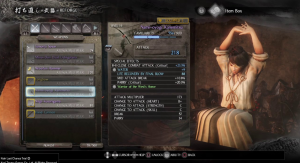In the past, I’ve talked about game tutorials from the perspective of the philosophy of how to design them. For today’s post, we’re going to get into the nitty gritty and discuss what elements you need to have when building video game tutorials.
Before we begin, here is a previous post that I wrote about the hierarchy of learning and the 3 essential questions when it comes to teaching someone a game system. Figuring how much or how little to tell someone about your game is crucial for developing a good tutorial.
If your tutorial is too long, it may overwhelm a new player. However, if it’s too short, you may leave players scratching their heads about your game. Regardless of length and actual design, the following categories should be required of any game tutorial no matter the genre.
1: The Basic Mechanics
This should be obvious by now, but it needs to be said. Every tutorial should start with the bare minimum when it comes to playing your game. Movement, actions, the UI; basically what someone needs to actually start playing your game.
You cannot rely on out-of-game video guides or the manual (if you have one). The very first part of your tutorial should be enough so that someone can at least understand the first 10-15 minutes of play. Depending on the genre and design in question, this can either be very short or take a few minutes to go through.
If I’m still not sure what your gameplay is about after doing your tutorial, then you have failed in its design.
2: What’s Unique
Now we have the special factors of your game. This category includes any mechanics or elements that are exclusive to your game/genre, or unique to any other game. If you’re building a stealth game, this is where you talk about how detection works.
This section is very important, because this should be your game’s selling point. I should know what makes your game different from other games on the market. More importantly, this is the part of the tutorial that the player is not going to know about coming into your game. For strategy games, we can also talk about the UI here as well.
Most likely this will be the longest part of your tutorial, as every player is starting at zero in terms of knowledge.
3: Supplemental Systems
Understanding how systems interact with each other is another major part of your tutorial design. For this section, we’re talking about how other systems or mechanics influence each other. A good example would be the use of persistence mechanics before and after a match.
This group would represent advanced systems. By the time someone gets to this part of your tutorial they should know the basics of your game. For titles that feature a secondary crafting/upgrade system, this would be the time to talk about it. It’s important to talk about any systems that are vital to the player’s success. For RPG-based games, having tooltips that explain what stats do or an explanation would fit this category.
The easiest way to describe this group would be systems that aren’t directly used while playing the game, but are required for winning the game.
4:What’s Esoteric
Finally, we come to the “out there” elements. This category includes any special rules or mechanics that would not come up in regular gameplay. Another way to describe this category would be “technical play.”
An easy way to figure out what elements belong in this category is one question: Would this be something that a player can figure out on their own or even know that it exists? Some examples would be multi-jump options, advanced maneuvers or bonuses, and rules that impact play. For strategy games, this could include special rules for combat. If you’re playing a CCG that features unique terminology, you would spell it out here.
Fighting games in particular have a lot of esoteric rules and systems. Frame-canceling, advance guard, hyper-armor and so on. Skull Girls is still the best example of a fighting game tutorial for going over the technical side of playing.
For many tutorials, this category is the last (and sometimes optional) part of your tutorial. There is a fine line between telling too much or not enough. You don’t want to play the game for the person, but at the same time if there is something impacting the game that is hidden, they should know about it.
This is where play testing can help out when designing your tutorial. If people are missing an important system or mechanic out of everything else in your game, then that would be a good candidate to bring up here.
Designing Education:
At the end of the day, a good tutorial is very important when it comes to making your game accessible. If you’re trying to build the next Esports game, being able to properly educate players on how to play is vital if you want a healthy community. Great tutorial design is the hallmark of an amazing designer, and is an area where so many games fail in.
Hopefully this list and my hierarchy of learning will help you out when it comes to designing your game.




